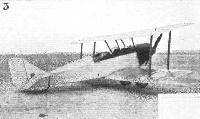
Swallow. Самолеты
Основанная в Уичита, штат Канзас, компания "Swallow Aircraft Company Inc." в конце 1920-х годов выпускала трехместные бипланы с открытыми кабинами Swallow New Swallow (Commercial Three-Seater). Самолет представлял собой развитие более раннего биплана Laird. Построили около 100 New Swallow с мотором Curtiss OX-5 мощностью 90 л. с. (67 кВт), еще некоторое количество самолетов собрали с моторами Hispano-Suiza и Wright Whirlwind.
Авиакомпания "Varney Air Lines" использовала бипланы CAM.5 для доставки почты. CAM.5 был вариантом самолета Swallow с оборудованным в передней пассажирской кабине почтовым отсеком и мотором Wright J-4 Whirlwind мощностью 200 л. с.
Легкий двухместный учебный самолет Swallow TP выполнил первый полет в 1929 году. Изначально на нем стоял мотор Curtiss OX-5. Построили порядка 200 TP, но потом из-за нехватки моторов OX-5 пришлось перейти на выпуск Swallow TP-K с 100-сильным мотором Kinner K5 (построено 13) и Swallow TP-W с мотором Warner Scarab мощностью 110 л. с. (построено три).
С 1930 года в вариантах HA, HC и HW строился самолет Swallow Sport, модификации отличались моторами Axelson, Continental и Wright, соответственно. Из-за экономической депрессии спроса на самолет не возникло. В конце 1930-х годов фирма сделала еще одну попытку добиться успеха на рынке, выпустив легкий двухместный кабинный моноплан Coupe и двухместный расчалочный низкоплан LT-65. Вступление США во Вторую мировую войну привело "Swallow" к окончательному краху.
Описание:
- Swallow. Самолеты
- Flight, April 1924
THE "SWALLOW" 1924 THREE-SEATER COMMERCIAL BIPLANE
Фотографии
-
Air International 1993-02 / G.Jones - Swallow to Airbus
A replica of the Wright J-4-powered Swallow biplane, five of which were operated by Varney Air Lines on US Mail contracts in the late-1920s. It is generally accepted that this was the first aircraft operated by the company that was to emerge as United Airlines.
-
Мировая Авиация 245
Известный под названием "J-4 Swallow", этот восстановленный самолет окрашен в оригинальные цвета почтовой компании "Varney Air Lines".
-
Flight 1926-10 / Flight
U.S. AIR MAIL SERVICES. C.A.M. No. 5. - One of the Wright "Whirlwind" engined "Swallows" now used on the Elko-Pasco route operated by Walter T. Varney.
-
Flight 1924-04 / Flight
AN AMERICAN THREE-SEATER COMMERCIAL BIPLANE: The "Swallow," 1924 model, fitted with a 90 h.p. Curtiss OX5 engine.
-
Aeroplane Monthly 1991-08 / Personal album. Civil
This “Hisso” Swallow was photographed at Crenshaw Boulevard in south-west Los Angeles. The site is now completely built over. The Swallow was built by the Swallow Airplane Company at Wichita and powered by various engines, in this case a 150 or 180 h.p. Hispano-Suiza. This version was certificated in July 1928 and only a few were built.
-
Flight 1924-10 / Flight
SOME MACHINES AT THE DAYTON INTERNATIONAL AIR RACES: The "New Swallow"
-
Flight 1925-11 / Flight
THE FORD RELIABILITY TOUR: Some of the competing machines which took part in the 1,900-mile reliability air-tour in America for the trophy presented by Mr. Edsel B. Ford. (3) The New Swallow.
-
Flight 1924-10 / Flight
SOME MACHINES AT THE DAYTON INTERNATIONAL AIR RACES: The racing "Swallow."
- Фотографии







